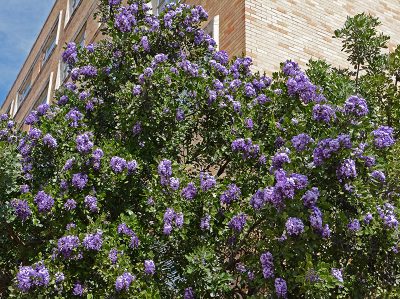Can I cover my oak tree roots with compost or soil to plant groundcovers?
Older trees can have large exposed roots. They can actually be a hazard, so if you can cover them, you definitely should. And if the tree is in the lawn, the roots are also in the way of the mower and can get nicked, which wouldn’t be good. Building up the soil over those roots and planting a groundcover, one that doesn’t need to be mowed, is a great idea. Just make sure that the soil/compost or mulch that you add doesn’t touch the trunk, and that you don’t apply it too thick. Two to four inches is a good amount, but don’t apply more than that-you don’t want to cover those roots too deeply.
I’m sure you’ve noticed the bark-like texture of the exposed roots. Although they once took up water and nutrients for the tree, now they serve as support, and are connected to the feeding roots, which are found at the drip line of the tree, out past the furthest branches.
If you do plant a groundcover over the exposed roots, be careful not to damage the roots when you dig around them. A wounded spot will allow for fungi and bacteria to invade, which could damage your tree. And a large cut might result in die-back in the part of the tree connected to the cut root.

 Anne Bellomy
Anne Bellomy Lauren Springer Ogden and Scott Ogden
Lauren Springer Ogden and Scott Ogden Daphne Richards
Daphne Richards
 Merredith Jiles’ Drought Survivors
Merredith Jiles’ Drought Survivors Merrideth Jiles
Merrideth Jiles